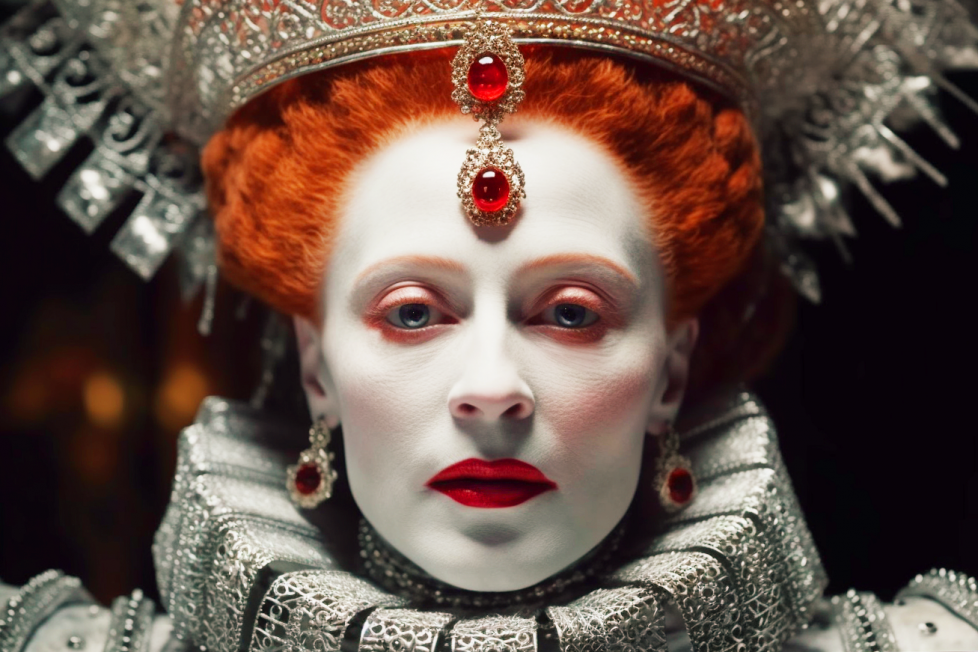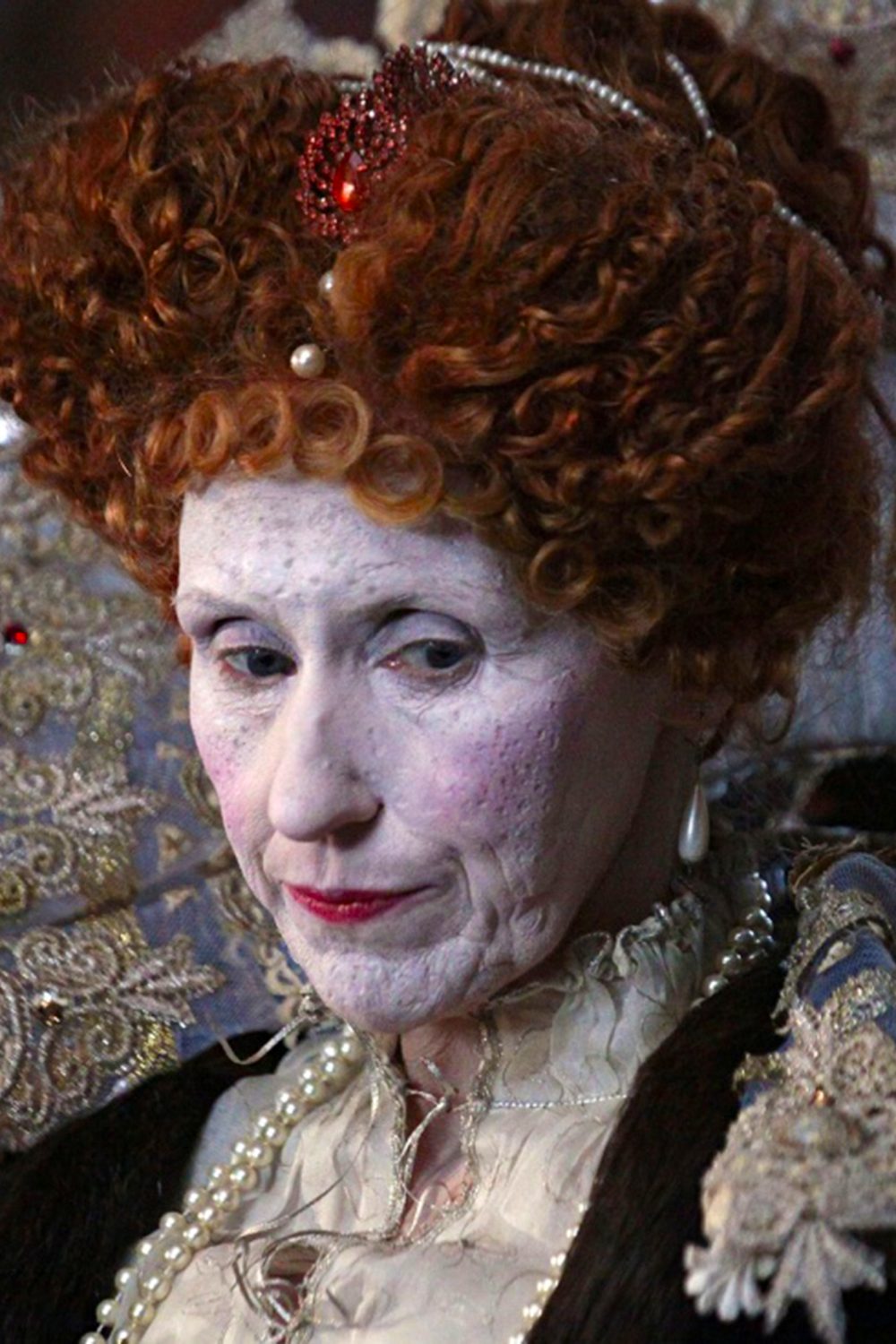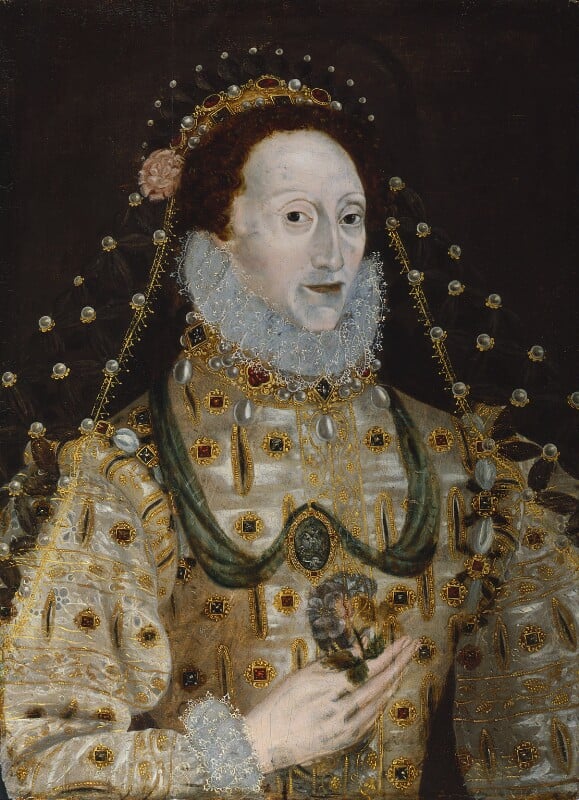Did Toxic Makeup Kill Queen Elizabeth I?
Did the Virgin Queen’s obsession with her image really cause her death?

Did the Virgin Queen’s obsession with her image really cause her death?

Table of Contents
ToggleA pale face, red lips, rosy cheeks and arched eyebrows reminiscent of a clown’s makeup – this striking cosmetic combination designed to indicate the wearer’s privileged status was the favorite style of Queen Elizabeth and her noblewomen.
A pallid complexion for instance was unattainable for the lower classes who often toiled outside in the sun to survive day-to-day. In contrast, monied elites could fritter their days away from the sun indoors.
Like her ladies-in-waiting Elizabeth was keen to keep up aristocratic appearances, but she also overapplied makeup for other reasons. Chiefly, she did it to hide the scars of a near-fatal disease and to project a flattering image of herself. Ironically though, she became a lot less flattering as a result, and may have even died because of it.
In mid-October 1562 a 29 year-old Queen Elizabeth fell suddenly ill with smallpox, a disease with only a 30% survival rate. As her sickness worsened pus filled sores and blisters painful to the touch began appearing on her skin.
At first Elizabeth fretted that the blemishes and blotches that riddled her body would make it hard for her to find a suitable match. Soon though things became a lot more serious when the childless and husbandless queen slipped into a coma.
Although she pulled through, Elizabeth had paid a terrible price for her survival for her face and body were now permanently disfigured. As a result, for the rest of her days she hid her injuries underneath heaps of makeup.

Sensitive that the scars that marred her might undermine her authority, Queen Elizabeth I had a draft proclamation issued in 1563:
“to forbid and prohibit the showing or publication of such (images) as are apparently deformed.”
For the rest of her reign Elizabeth’s popular image was crystallized by reams of royally-approved portraits. The most famous and flattering has to be the 1575 Darnley portrait in which the queen, oozing with understated authority, is depicted as a comely figure with flawless white skin.
In-person Elizabeth wanted to project the same image, a look she manufactured using beauty products so toxic they could probably double up as rat poison.

Elizabeth was an avid user of Venetian ceruse, also known as “the spirits of Saturn”. Applied to her damaged skin in thick layers, this noxious substance not only gave her the appearance of a ghost but also made it more likely she was going to prematurely become one.
Popular from the 16th to 18th centuries, Venetian ceruse is the most toxic makeup ever according to Guinness World Records, being made from a mixture of highly poisonous ground-up white lead ore and vinegar.
With a catalog of side-effects that can include lead poisoning, hair loss, skin discoloration, and general cognitive decline, it’s no wonder that 31 years after Queen Elizabeth’s death Venetian ceruse was officially recategorized as a poison.

Maintained by daily touch-ups, Elizabeth often caked herself in Venetian ceruse for up to a week, allowing the toxic lead chemicals to gradually seep into her skin.
After slowly poisoning herself the Queen damaged herself even more by removing her makeup with a concoction of eggshells, alum, and most toxic of all – mercury.
The side-effects of mercury poisoning can include an array of mental ailments such as memory loss, irritability, and depression as well as a battery of physical maladies like muscle weakness, lack of coordination, and kidney damage. Worst of all though Elizabeth’s flesh would also have slowly been eaten away.
Her mercury-infused cinnabar red lipstick, which made her lips garishly red, would have also irrevocably harmed her in much the same fashion.

As she aged, the Virgin Queen’s appearance radically changed in no small part because of her cosmetic obsession.
The most striking difference was the state of her teeth, which over time turned from white to yellow to rotten black – a telltale sign of mercury poisoning.
The decay was also compounded by the queen’s insatiable desire for sugar, a product she not only devoured but used to polish her gnashers in the form of a honey toothpaste.
Less obvious was Elizabeth’s hairless head, which she took great lengths to conceal under elaborately styled wigs.
In fact her baldness was only officially confirmed in 1599 by the Earl of Essex, who got quite the shock after accidentally walking in on his Golem-like queen without her makeup or wig – not a pretty sight by any stretch of the imagination.

Although Elizabeth’s rotting teeth may have in part been caused by her penchant for sugary treats, her mental health struggles were more than likely the result of chemical poisoning.
Before her demise Elizabeth was so distraught at the passing of her loyal lady-in-waiting Katherine Howard and her court ally, Robert Devereux, that she plunged into deep depression.
She was equally mournful about Mary Queen of Scots, expressing regret that she hadn’t put a stop to her cousin’s execution. According to a contemporary source, Elizabeth:
“shed many teares and sighs, manifesting her innocence that she never gave consent to the death of that queene”.

In another indication of her corrupted mind, those close to her reported how Elizabeth was also bedeviled by visions of her weak, frail body.
Her behavior also became increasingly unpredictable, with one observer claiming that a playing card with a nail driven into its head was found on the queen’s chair.
Another account relates how the queen stood in her private quarters for close to 15 hours because she was terrified that if she lay down she would never get up again. She purportedly collapsed onto a cushion-strewn floor for four days before her attendants finally managed to shepherd her into bed.
To top it all off Elizabeth refused to be attended or bathed, preferring smelly isolation to courtly duties.

In the weeks before her death it was evident that toxins had also taken a malignant hold over her vocal chords, since reports suggest that Elizabeth had completely lost the power of speech – another common side-effect of mercury poisoning.
Unable to use words to inform her advisors about her succession plan, the enfeebled monarch was forced to communicate her wishes via a series of hand gestures. Hence, in order to confirm James I of Scotland as her successor, the dying queen drew a circle around her head in the style of a crown.
A more grisly physical symptom may have manifested itself after her death. At her funeral the queen’s corpse, saturated with chemical vapors, apparently exploded inside its coffin, although this is probably a spurious claim propagated by one of her enemies.
It’s undeniable that Elizabeth suffered from combined lead and mercury poisoning because of her makeup. Did it, however, ultimately cause her death? Or were their other factors at play?
Some have suggested that Elizabeth’s coronation ring, which she wore for 45 years straight, was responsible. This is because a week before her end doctors had to cut the ring off her finger, causing a swelling on her hand that may have caused her to develop sepsis, a form of blood poisoning.
This was brought on by the fact that over the years the ring may have actually grown into her flesh.

While the coronation ring hypothesis remains unprovable, a recent autopsy of Elizabeth’s remains has provided the most concrete explanation yet for Elizabeth’s mysterious passing.
A post-mortem carried out by Home Office pathologist Brett Lockyer has revealed the existence of a fluid build up in the queen’s lungs, illustrating that Elizabeth most likely died of bronchial pneumonia.
Lockyer believes that her lung infection spilled over into the rest of her system, causing her to develop blood poisoning and then heart failure.
Thus while the side-effects of lead and mercury poisoning certainly amplified her ailing health, they were not the root cause.

Even so, the loss of her good looks must have been a devastating blow to the famously narcissistic sovereign, and something she may have even feared worse than death itself.
